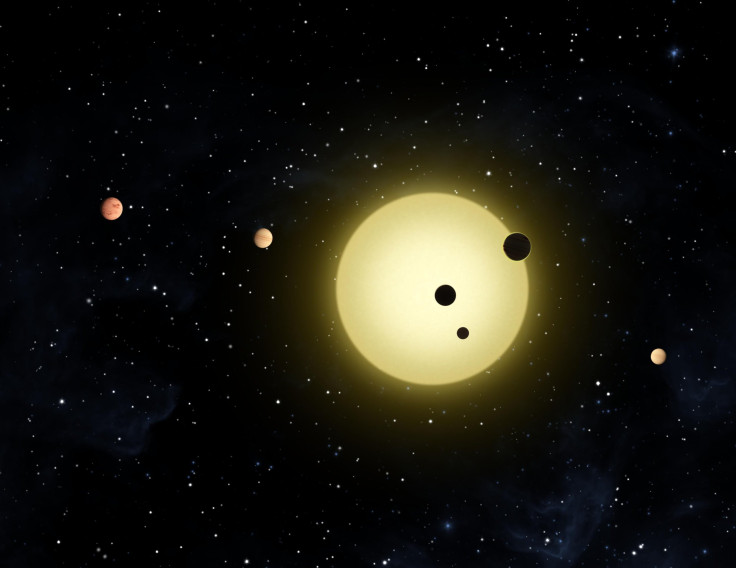First Exomoon Found? Scientists May Have Discovered A Moon Orbiting An Exoplanet

Scientists may have discovered a moon orbiting an exoplanet for the first time ever.
The team, headed by an astronomer from Columbia University, are reporting that they found evidence of a moon circling a planet outside of our solar system, although the findings have not yet been confirmed and will require further observations. If they turn out to be correct, the moon’s existence could tell experts more about the makeup of the universe as well as our own solar system.
Read: Here’s How Scientists Would Respond to an Alien Message from Another Planet
This possible moon was first detected using data from NASA’s Kepler Spacecraft, which has been used to search for exoplanets. The Hubble Space Telescope is scheduled to take a closer look at the area in the future, according to the team’s study, and it could possibly confirm the presence of the moon, dubbed Kepler-1625b I — because it is orbiting the planet Kepler-1625b, which in turn orbits the star Kepler-1625.
“This candidate has passed a thorough preliminary inspection, but we emphasize again our position that the Kepler data are insufficient to make a conclusive statement about the existence of this moon,” the authors warn. “Only after the [Hubble] observation is made should any claim about this moon’s existence be given much credence.”
If this hunch proves to be real, it would be the first moon outside our solar system ever discovered.
It may also be the largest moon discovered anywhere: The scientists estimate that it is roughly the size of Neptune, which would make its host planet perhaps the size of Jupiter, the largest planet in this solar system.
Telescopes have found a tremendous number of planets outside our solar system in recent years with the help of equipment like the Kepler Spacecraft, some of them orbiting stars at just the right distance for the star’s heat to sustain liquid water — known as the habitable zone. These finds have shown us just how common planets are in our galaxy and in the universe, which boosts the hopes of people who hope to find a planet like Earth that hosts alien life, even if the planet is many light years away. But when it comes to discovering the bodies of other solar systems, moons pose a greater challenge in part because of the way they move around in space.
This team of scientists observed the possible exomoon in the same way they would have detected a new exoplanet: They watched out for changes in light caused by one space object passing in front of another. When it comes to finding exoplanets, astronomers see that light from a star is diminished when an orbiting planet passes in front of it, from the perspective of Earth. In this case, light reflecting off an exoplanet was dimmed when the exomoon passed in front of it.
They were digging through data on 284 Kepler exoplanets when they found the moon’s signature.
Read: How to Reach Faraway Exoplanets? Ride a Light Beam
According to a report on the research, the team saw this happen three times, as the alleged exomoon made three trips around its host planet. However, they noted that there could be another cause of the dips in reflected light, which isn’t very bright to begin with because the solar system is 4,000 light years away.
If the exomoon truly is there, scientists can learn a lot from it. In this corner of the galaxy, the moons of our solar system “offer clues to the mechanisms driving early and late planet formation, and several of them are thought to be promising targets in the search for life, as several are rich in volatiles and possess internal heating mechanisms,” the study explains. “The moons of our solar system also demonstrate the great variety of geological features that may be found on other terrestrial worlds.”
They could have similar uses in another system, telling astronomers more about the worlds within it and in turn showing how similar or how different they are from the ones here.
“Moons present unique scientific opportunities,” the authors wrote. Exomoons “may yield just as many surprises as their host planets before them.”
© Copyright IBTimes 2024. All rights reserved.





















